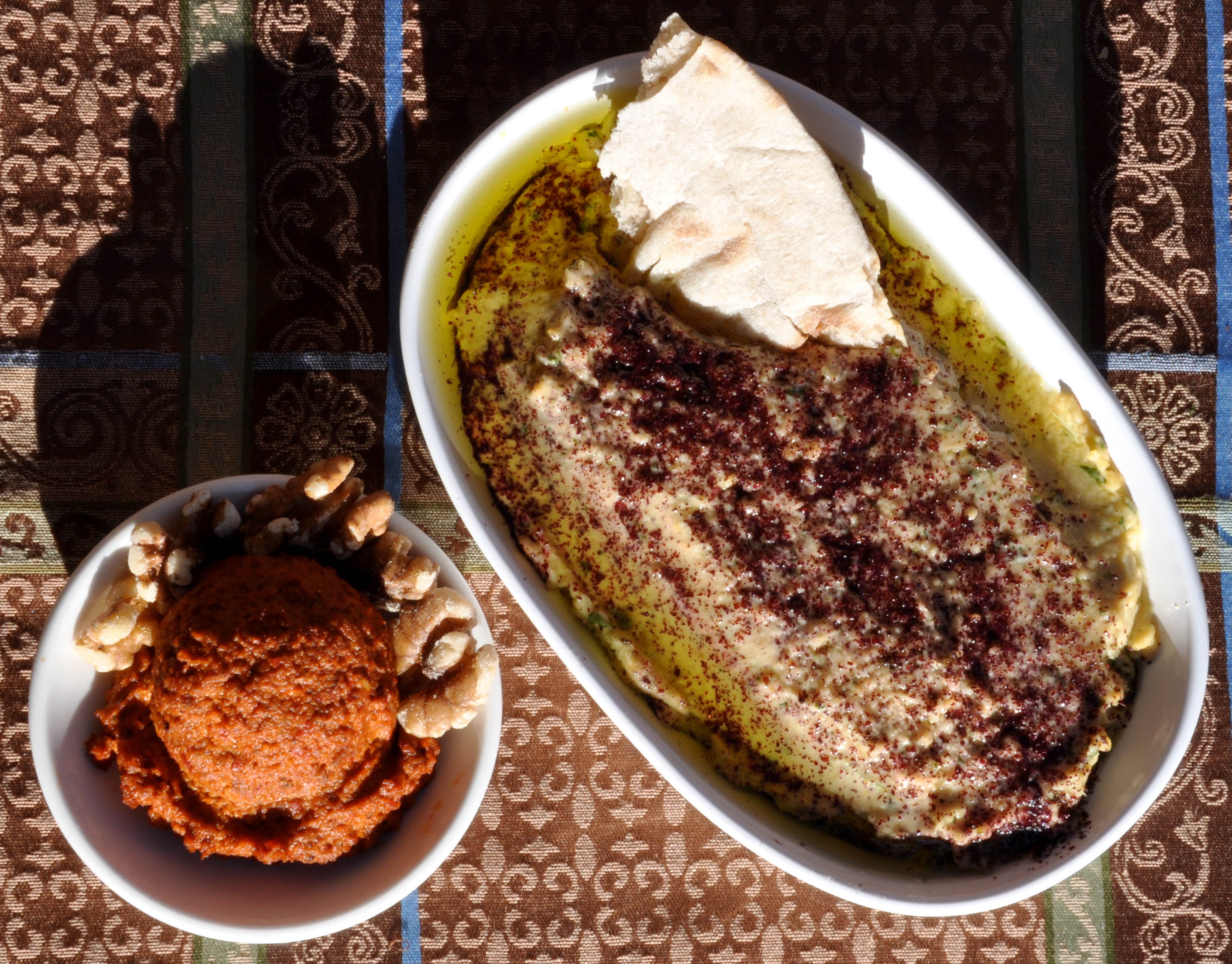
Hummus & Muhammara
One of the favorite ways to enjoy eating khoubz is by dipping torn pieces into various strongly flavored pastes. Many different types of these pastes exist throughout the Middle East, North Africa and Aegean, made from a wide variety of ingredients, including broad beans (byessar), eggplant (baba ganoush), cucumber and yogurt (tzatziki), and even mashed potatoes and fish roe (taramasalata). For our vegetarian iftar, we’ve made two spreads: hummus (above, right) and muhammara (above, left). HummusHummus originated in the Levant, an area now comprising Israel, Jordan, Lebanon, Palestine, Syria, and parts of southern Turkey and northern Iraq. It uses common (and early-domesticated) crops from the region including chickpeas, sesame, garlic, lemon, and sumac. While pre-packaged hummus is now commonly available throughout the county (we’ve even seen it for sale in the little Hispanic town of Socorro about an hour south of Albuquerque), these – as well as those produced by almost every recipe we’ve encountered – ends up being rather dull and hardly a proper accompaniment to your fresh khoubz. However, we’re going to share with you here the hummus recipe to beat all hummus recipes, closely based on one related in Anna Thomas’ Vegetarian Epicure Book 2. It is worth buying a copy of this classic cookbook for this recipe alone. Unlike the boring pap that passes as most hummus, her recipe makes an addictive spread that energizes your palette with lots of garlic, sesame, and lemon juice. This is a hummus that jumps off the plate. We’ve doubled down on the flavor profile by adding in cilantro, even more fresh garlic, as well by topping the finished spread with sour and spicy ground sumac berries. Makes approximately 5 cups. 1½ cups dried garbanzos cooked until tender Mash the garbanzos until they form a chunky paste. Add in the remaining ingredients, and continue mashing until they have formed a smooth puree. We use an immersion blender to do this; a regular blender would work fine as well. Place finished hummus into a wide serving bowl and smooth flat. Sprinkle over with ground sumac and cover in a thin layer of olive oil. Please don’t use canned garbanzos unless you have no other choice – the hummus will pick up a metallic taste from the can that will spoil the freshness of the dish. Plus dried beans are always less expensive. MuhammaraWhile hummus and baba ganoush have achieved international culinary celebrity status, some of the other meze pastes have remained more obscure. For our second spread in this meal we’re sharing a recipe for one of these lesser known cousins, muhammara (محمرة) meaning “reddened" in Arabic. This is walnut and dry bread-crumb based paste from the Aleppo, Syria region that is generously flavored and colored with the hot peppers so famous from that region. The original inspiration for this dish may lie to the east in the Caucasus Mountains where walnut-based sauces and pastes are a common component of the Georgian, Armenian, and Azerbaijani cuisines. The use of pomegranate is also common to these regions. Makes about 2 cups ½ cup dried bread crumbs Combine all ingredients and puree until smooth. We use an immersion blender to do this. Add enough water to make an easily spreadable paste. Pepper paste and pomegranate molasses are available in any Middle Eastern market. |
